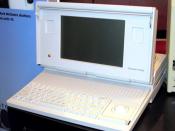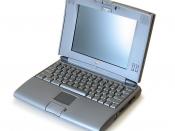In the fall of 1989, Apple was facing different challenges.
The first challenge was to enter in a very short time (18 months instead of 48 months for the Mac Portable) a new market, the notebook market, which was to become a major one. If Apple wanted to be able to lead this new high potential market, it had to learn from the failure of the Mac Portable in order be really "time to market".
To face this challenge, Apple also had to face its organizational problem revealed during the development of the Portable. Indeed Apple's structure proved too heavy and the decision process too long and too complex to answer the level of reactivity needed in a such a market. The firm had to be reorganized very rapidly and doing this reorganization while launching a new product in a short amount of time represented a difficult challenge for Apple.
The Mac Portable failed for different reasons. First Apple focused on competitors' shortcomings instead of proposing a real differentiation. Secondly, Apple didn't make any compromises and this led to a late introduction. Last but not least, Apple paid too little attention to the market and the way it evolved and to the competitors. It even forgot its user-friendly approach by launching a product too heavy and not answering customers' expectations.
Apple PowerBook's success benefited from numerous actions with positive impacts within the company:
Accurate consumer insights allowed Apple to address consumers'expectations and needs
through a good understanding of what a notebook was to them. Users were attached to their personal computer and could easily use it thanks to:
Suitable size and weight
Existence of palm-rests and a fine tuned trackball that brought comfort and precision
Good prioritization of essential attributes in spite of complicated manufacturing as the integration...


